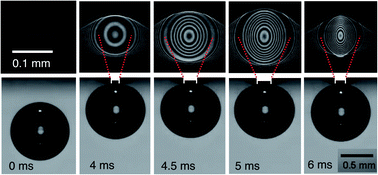Effects of hydrodynamic film boundary conditions on bubble–wall impact†
Abstract
Nanoscale interfaces among liquids, solids and gases determine the macroscopic dynamics of a bubble (e.g. the terminal rise velocity and bouncing behavior). Here high-speed interferograms of liquid films created from rising and bouncing bubbles are compared against mobile and immobile interface models. Quantitative agreement of the thin film dynamics with lubrication theory is obtained. Bubbles in deionized


 Please wait while we load your content...
Please wait while we load your content...